Compare a quartz agglomerate with natural and acrylic stone, we disassemble the pros and cons of tabletops from this material and share the Lifehak for savings.
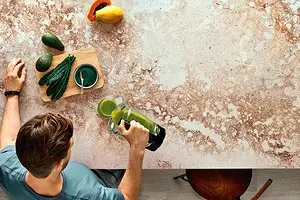
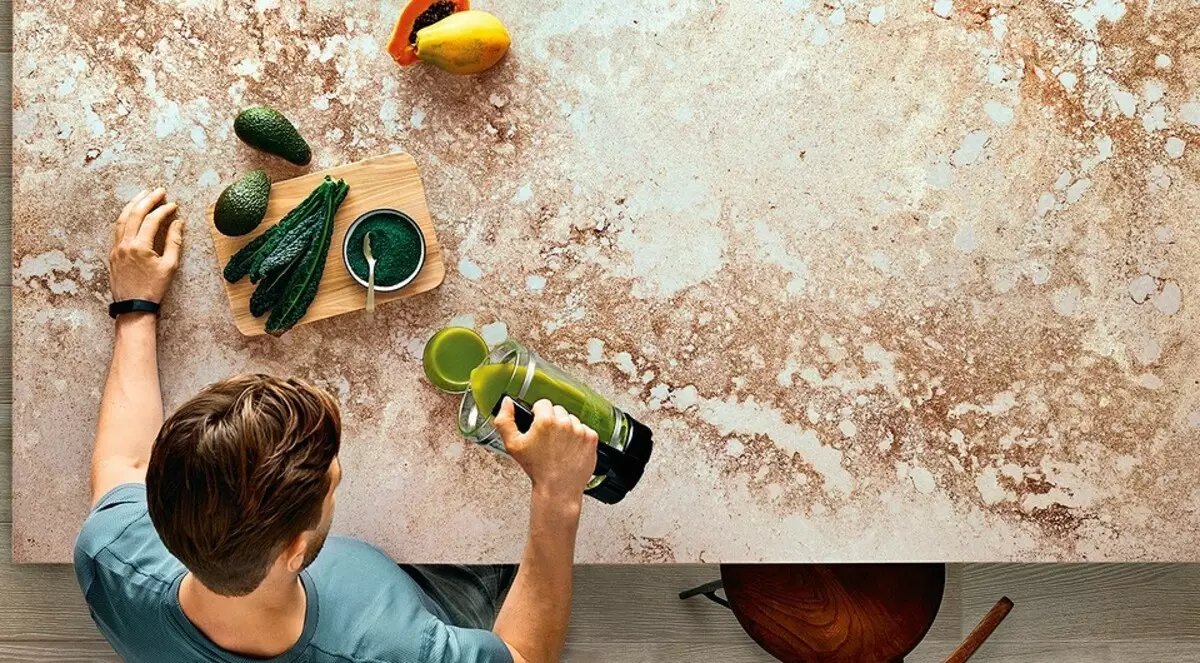
The dream of any housewife is resistant to water and mechanical effects, heat-resistant worktop. Those who wish to have, besides, the material is spectacular and prestigious are usually choosing between natural stone, agglomerate and composite acrylic stone. What preferred?
Features of the countertops from quartz agglomerate
Of the materials of the middle and high price category for tabletops, natural stone, agglomerate and acrylic composite are most in demand. The first stone is beautiful, prestigious, roads and requires a gentle relationship and specific care. Acrylic materials give huge opportunities for seamless formation, but their decor is not too diverse. Quartz agglomerate has higher strength characteristics than natural stone, and incomparably diverse acrylic in terms of design.
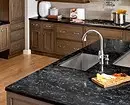

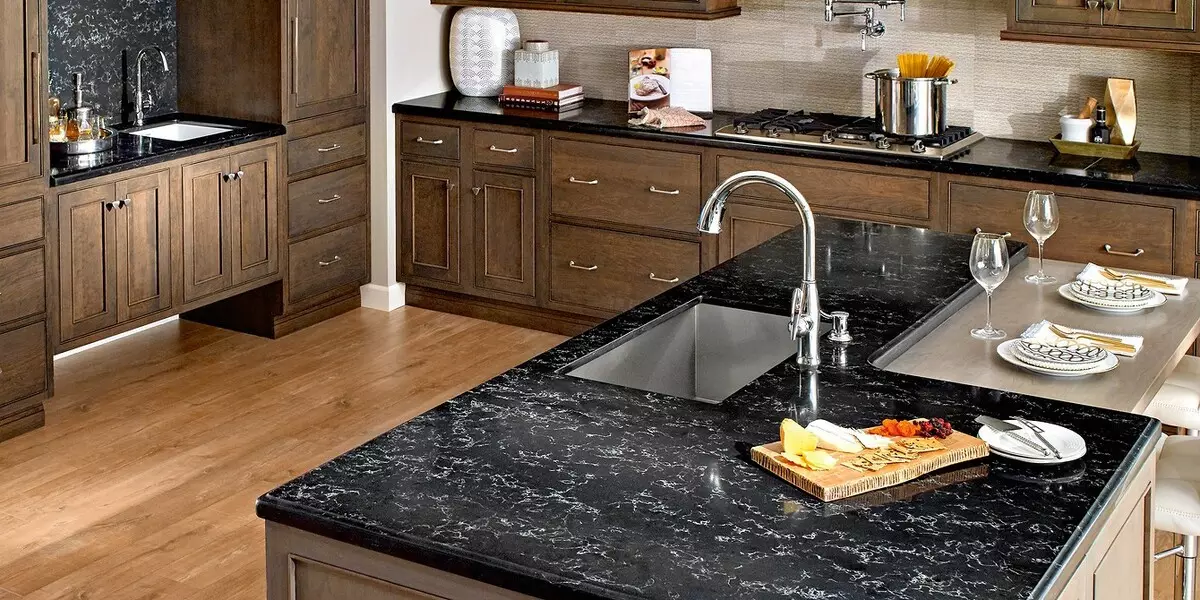
Due to the absence of pores, the quartz stone does not absorb any substances and cannot be painted.
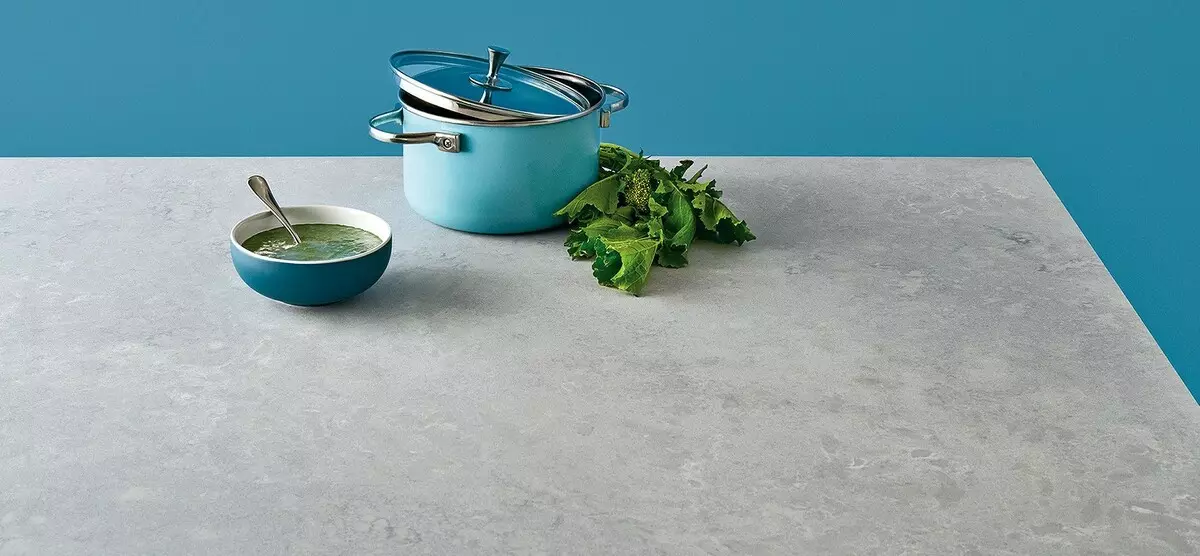
The absorption indicator of the moisture of the quartz agglomerate is so low that the appearance of implanted stains and empty odors is simply excluded.
For the sake of justice, we note that quartz, marble, granite, adventurine and other stone are used as the basis of the agglomerate. But the vast majority of products are performed from quartz - one of the hardest minerals on Earth. Crushed quartz mixed in special mixers (its share comes to 90-96%), polyester resin and pigments. The mixture is placed in rubber forms and pressed. The finished mass is obtained by devoid of micropores and cracks. Forms with it are sent to the furnace, where at a temperature of just over 100 ° C loose ingredients and resin turn into a solid homogeneous material. After cooling it is grinning and polished.
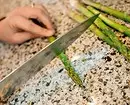
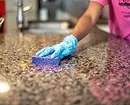
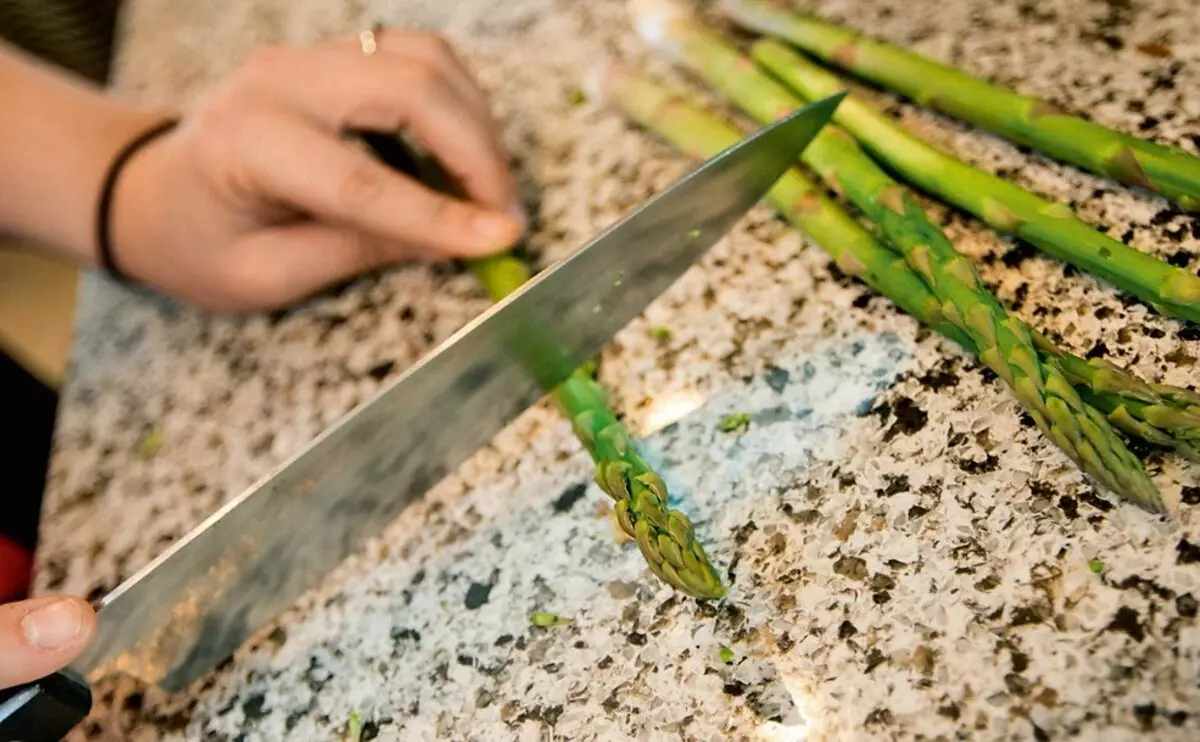
Immunity to edible acids and alkalis, along with high hardness helps a tabletop from agglomerate to become the most extended cutting surface of the kitchen.
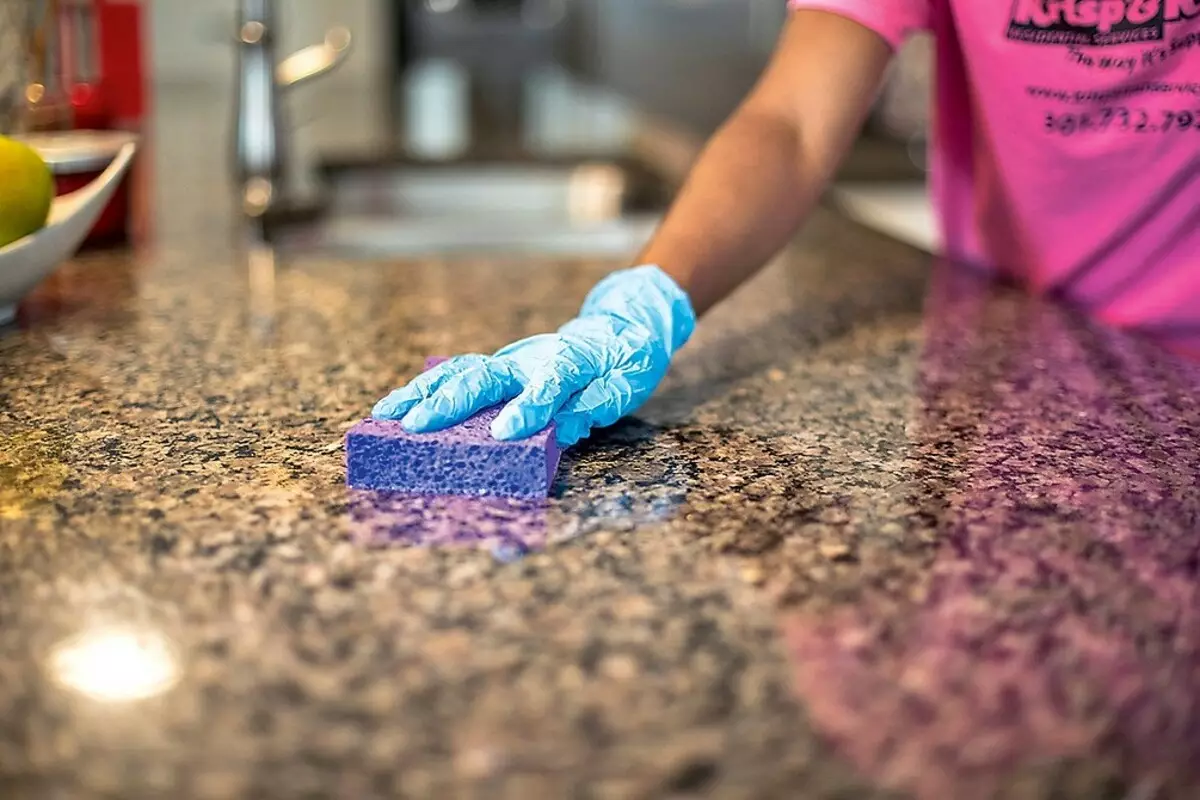
The finished material has high strength, racks to bending and shock loads. Thanks to almost zero water absorption, it does not absorb dirt, it is easy to clean. On its surface microorganisms do not multiply.
The surface of the quartz agglomerate countertop without any damage withstands the heating to 180-185 ° C, so it can be put on it with hot dishes right from the stove.
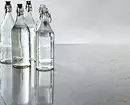
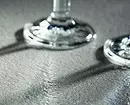
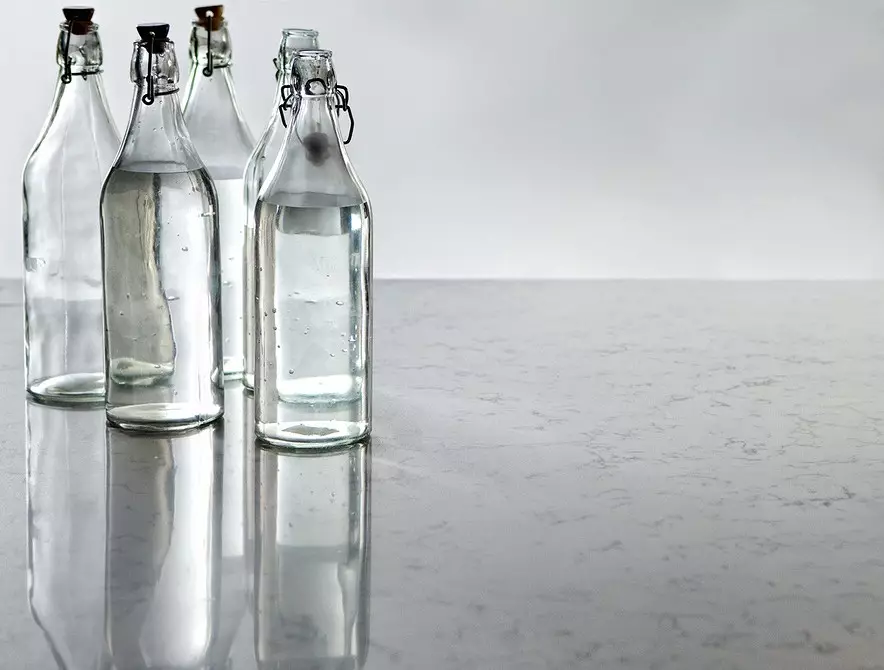
The polished surface enhances the color and glitter, rough, except for pleasant tactile sensations, prevents the sliding of the kitchen utensils.
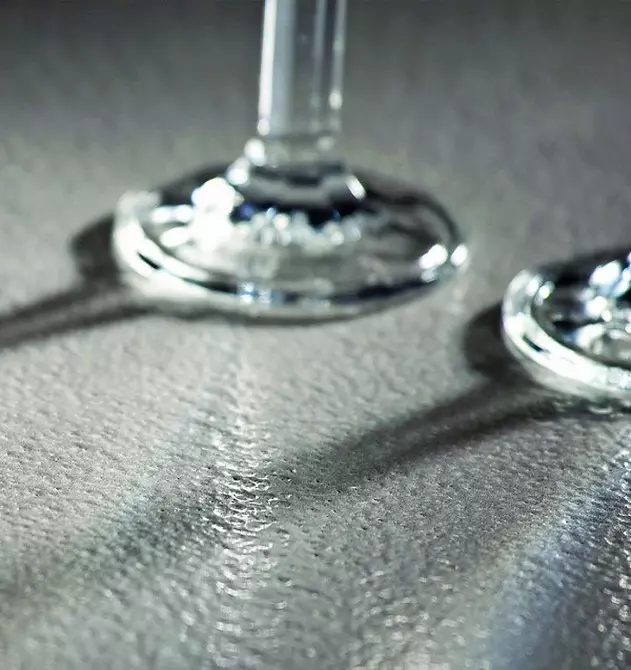
The surface of the agglomerate, depending on the type of treatment, is polished, semi-polished, polished and rough. On a smooth surface with a mirror glitter, a pattern, color and texture of stone appear. Reducing the number of processing cycles, half-polished and polished agglomerates with varying degrees of gloss are obtained. The rough surface becomes after exposure to the sandblasting machine. It can be just a grainy surface or a relief pattern.
Pros and cons
| pros | Minuses |
| High resistance to mechanical damage and abrasion. | Noticeable joints on long-length table tops. |
| Practically zero water absorption and, as a result, resistance to the formation of fungi and mold. | Insufficient resistance to UV rays, use only indoors, with the exception of collectionswith light-resistant pigments. |
| Immunity to various pollution and household chemicals. | |
| Sufficient resistance to high temperatures and flames. | |
| Convenience in everyday care. | |
| Wide palette of decors, colors, surface textures. |
How to save
In our market, quartz agglomerate plates are represented by Caesarstone, Cambria, DuPont (Brand Corian Quartz), Hanstone, Plasa Stone, Quarella, Samsung Radianz, Cosentino (Brand Silestone). The price of the workpiece under the table top Width of 60 cm starts from 6500 rubles / p. m.
Manufacturer countertops takes standard blanks from the manufacturer. And if the size of the future countertop exceeds 3 m, it may have to pay two blanks if you cannot find the desired piece from the residues. It is worth considering when creating a kitchen furniture project.
The most spectacular and expensive quartz agglomerate plates are with a large decor under natural stone. The smaller the splashes and more uniform surface, the cheaper the material.

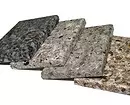
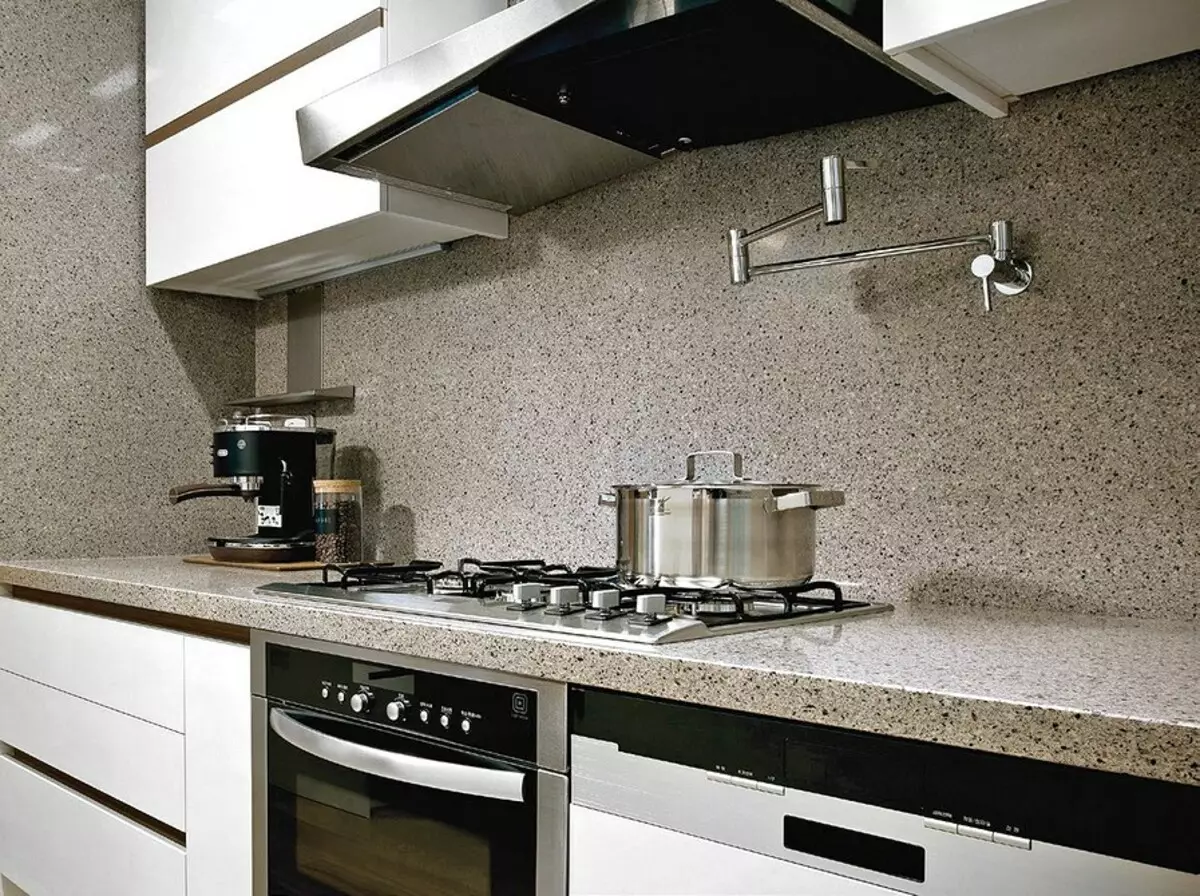
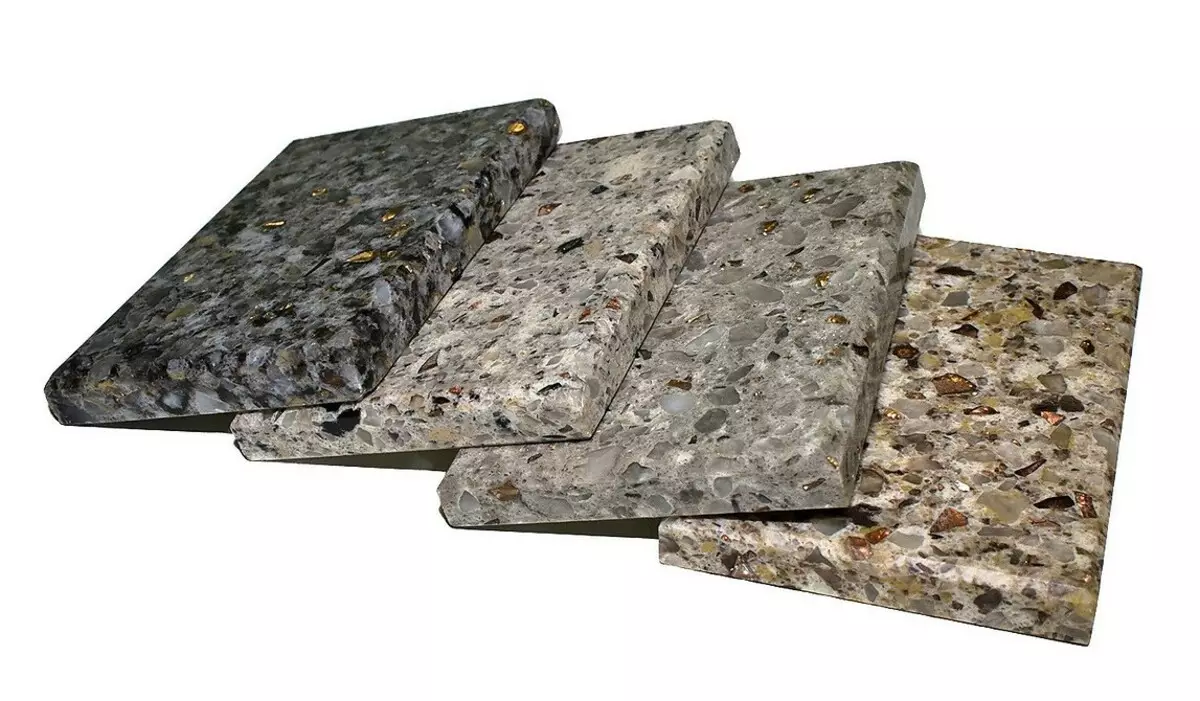
The plates of the agglomerate have a length of 3-3.6 m, the width of 1.4-1.6 m. Suitable for the manufacture of tabletops thickness - 20 and 30 mm, for cladding walls - 12 mm.


